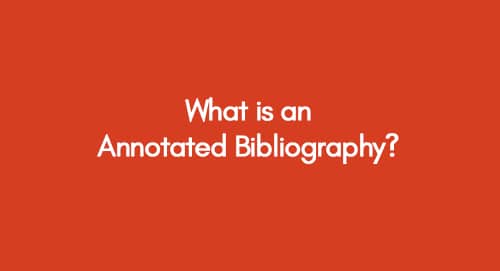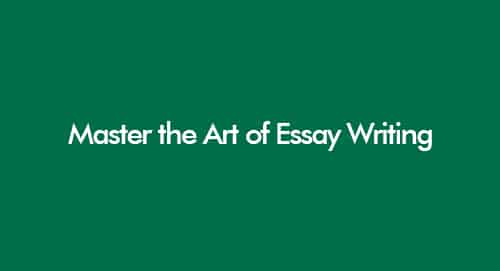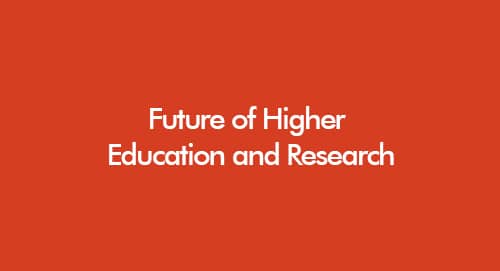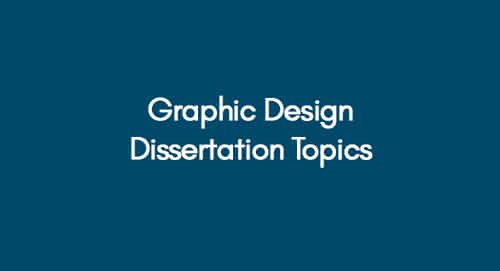
Graphic Design Dissertation Topics | List of Top 20 Topics in 2024
October 4, 2022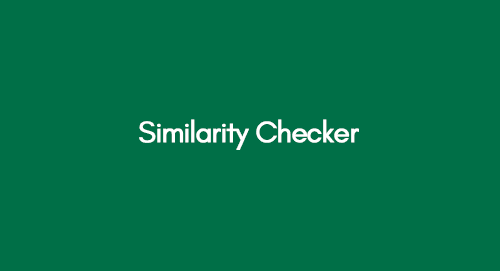
A Free Similarity Checker For Dissertations, Research Papers, Articles, Essays and Assignments
October 5, 2022An annotated bibliography offers an organised list of sources, such as books, articles, and websites, with a brief summary and description for each citation. The main purpose of writing annotated bibliography is to provide a brief summary and critical evaluation of the sources. It helps in evaluating the relevance and accuracy of the cited references.
The Purpose of an Annotated Bibliography
Here is a complete guide to making an annotated bibliography with tips and examples:
The annotation aims to provide a comprehensive list of the sources. It reflects the relevance, accuracy, and quality of the sources. Annotations are a great source for identifying the relevant sources for the students and researchers. They help demonstrate the researchers' understanding of a particular research topic and reflect how the writers' work fits into the larger context of the existing research.
Annotated bibliographies could greatly assist when choosing materials and narrowing down your research topic. By reading and critically evaluating each source, you will better understand your topic and develop ideas for your paper or research project. An annotated bibliography can also help you identify gaps in the literature related to your topic and pinpoint promising areas for further research.
Learn How to Write a Research Project: Tips and Examples
Learn How to Write a Research Project: Tips and Examples
So, a well-organized annotated bibliography will serve the following purposes:
- Summarize the main argument or findings of the source.
- Assess the weaknesses and strengths of the source.
- Place the source in context within the larger body of literature on the topic.
- Explain how this source will be used in your research paper or project.
- Demonstrate that you have read and understand a body of work on a particular subject.
- Show that you can critically evaluate that body of work.
- Provide readers with information on the most important works in that area.
- Help you develop ideas for your research project.
How Does It Work?

Fill the Form
Please fill the free topic form and share your requirements

Writer Starts Working
The writer starts to find a topic for you (based on your requirements)

3+ Topics Emailed!
The writer shared custom topics with you within 24 hours
Guide to Writing an Annotated Bibliography
The annotated bibliography should be carefully crafted to avoid the complexity and irrelevance of the information. The following guide and expert tips will help you in creating an effective annotated bibliography:
- Choose the Format for your Bibliography
The selection of the format is the first step in creating a bibliography. The most common formats are MLA, APA, and Chicago. There are specific guidelines on how to list sources in each format. You should follow the guidelines provided by your institution in selecting the format.
- Gather the Information for Each Source.
After choosing the format, you will need to gather information for each source that you will be listed in the bibliography. For instance, the author's name, publisher and publication date will be required. Usually, the source's title page or the first page includes this information.
- List the Sources in an Alphabetical Order
List each source alphabetically by the author's last name once you have acquired all the relevant information. If no author is listed, you can alphabetise it by the source's title. It helps readers quickly locate the sources and ensures that sources are properly organised.
- Include all Relevant Information for Each Source
Make sure to include all relevant information for each source in your bibliography. It consists of the author's name, the source's title, publication date, and URL for online sources. In addition, provide a summary of the main points of the source being cited.
- Use Correct Punctuation and Capitalisation for Each Entry
Each entry in your bibliography must be adequately punctuated and capitalised according to the chosen format. Failure to do so could result in a lower grade or cause your work to be rejected by a publisher or professor.
- Check for Accuracy and Completeness
Once you have finished writing your bibliography, check it for accuracy and completeness. It includes ensuring that all required information is included and all sources are listed in alphabetical order.
- Make Necessary Revisions
Before submitting your annotated bibliography, proofread and edit it carefully. Check for grammatical errors and ensure your annotation is well-organised and flows logically.
- Use Concise Language
Use clear and concise language to make your idea come across easily. Avoid jargons and technical terms that are difficult for the readers to follow and understand.
Samples for Writing an Annotated Bibliography
Examples of Annotated Bibliography:
Example 1: APA Style Annotated Bibliography
Smith, J. (2015). The effects of social media on student engagement. Journal of Educational Technology, 22(3), 45-58. In this article, Smith examines the impact of social media on student engagement in the classroom. The author argues that social media can be a useful tool for improving student engagement but also highlights the potential distractions and challenges associated with its use. This article is relevant to my research topic as it provides insights into the benefits and drawbacks of social media use in education.
Example 2: MLA Style Annotated Bibliography
Jones, S. (2018). The impact of online learning on student performance. Educational Research Quarterly, 40(2), 67-80. In this article, Jones analyses the impact of online learning on student performance, including the advantages and disadvantages of this method. The author concludes that online learning can effectively improve student performance but highlights the need for proper training and support for students and teachers. This article is relevant to my research topic as it provides insights into the benefits and drawbacks of online learning.
Find Out How to Write a Strong Research Hypothesis
Find How to Use Primary and Secondary Data for Research Study
Important Points to Consider When Selecting Sources
- The Source's Credentials
When evaluating a source, it is vital to consider the author's credentials. What are their qualifications? Do they have any expertise in the subject matter? Are they affiliated with any organisations that may have a bias? Considering the author's credentials will help you determine the value of the information they provide. Author credentials highlight their education, abilities, and biographical details that qualify someone to write about or lecture on a subject. Consider the following credentials while selecting sources:
- Additional publications (books and articles on the same or related subjects
- Author's educational background in a subject area
- Relevance
Relevance is the idea that two topics are related, making it beneficial to consider the second issue while taking the first. Logic, cognitive sciences, library and information science, and other disciplines all study the idea of relevance. When selecting sources for your annotated bibliography, it is essential to consider the source's relevance. Ensure that the reference is relevant to your research topic and will be useful for your paper. Consider the following points while selecting sources for your topic:
- Does it cover the assignment requirements?
- Does it provide comprehensive coverage of the topics, or does it focus on a single aspect?
- To what extent does it answer your research questions?
- Authority
It is crucial to take the source's reliability into account. Who is the source's author? What are their credentials? Has the source undergone peer review? These are all elements that may be used to assess the authority of a source. Following are the platforms where you must focus on determining the authority of a selected source:
Print and Database Sources and Websites
- Investigate the credentials and affiliations of the author
- Attempt to find more sources written by the author of your targeted source and investigate whether these are scholarly.
- Examine if the author holds contact information
- investigate the credentials of the publisher
- Accuracy
Another important consideration is accuracy. Is the information in the source accurate? Are there any errors? Make sure to check the accuracy of the information before you use it in your paper. Keep in mind the following questions while considering the accuracy of a source:
- Has the source undergone peer review or editing?
- Does the author's work include a list of references? Are academic sources included in the list of references?
- Can you verify the information you've provided? What distinguishes this source from other sources?
- Does the language or tone reflect an opinion or include facts and figures?
- Are there any grammatical or spelling mistakes in the source? Is the source clear-cut, well-structured, and presentable?
- Is the data openly collected or open to revision by other writers or amateurs (as on Wikipedia or another public wiki)?
- Biased Sources
An unbiased attitude should be considered while choosing sources for your annotated bibliography. Biasness is a prejudice the author demonstrates towards something or someone, such as a person's political, religious, or financial aspect. As biased opinions are not clearly stated, it can be tricky to identify it. You may consider the source biased if you encounter any of the following aspects:
- The source is heavily opinionated or one-sided
- The source relies on claims that are unsupported or unsubstantiated
- The source focuses on highly selected facts that lean toward a certain outcome
- From a macro-perspective, the source may pretend to present facts but offers only opinion
- The author has used extreme or inappropriate language
- The author, with their writing, is trying to persuade you into a certain aspect without providing substantial evidence
- It is impossible or difficult to identify the author, or they may lack expertise or tends to write on unrelated topics
- The selected writing demonstrates more entertainment, parody or satire, rather than formal writing
- Timeliness
Timeliness also refers to how current and updated the material is on the website when we analyse web sources. We frequently assume that something must be current if it is on the web. The writers frequently abandon information on the internet for various reasons. When selecting sources, it is essential to consider timeliness. You must consider:
- How latest is the information in the source?
- Is it up to date?
- What is the date of copyright or publication of the article?
- Look for whether the source has been revised or updated.
- Investigate whether the information highlighted in the article is current or outdated per your research topic.
- The Publisher
The publisher is also an important consideration. The more information you have on the writer and publisher, the more confident you may be in using or rejecting the content. Publishers and authors can be either private persons or corporate entities. Consider the following for more precision:
- Is the source from a reputable publisher?
- Do they have a good reputation for accuracy and fairness?
Review the Following:
- How to Cite your Sources? A Practical Guide
- How to write an Academic Essay: Tips and Examples
- A quick guide on how to write the method section in Academic writing
Need help with your bibliography?
Bibliography writing can be challenging for students, but Premier Dissertation is here to help. We have a team of experienced bibliography writers who can guide you through the process step by step. We also offer a bibliography writing service, which can eliminate the hassle of bibliography writing. If you need help in writing the excellent bibliography or would like us to take care of the entire process for you, please don't hesitate to contact our team at Premier Dissertation by simply dropping us a message on Whatsapp or by Email, and we will get back to you within 24 hours. We would be pleased to help you in any manner we can. Thanks again for reading!
Get 3+ Free Dissertation Topics within 24 hours?

















